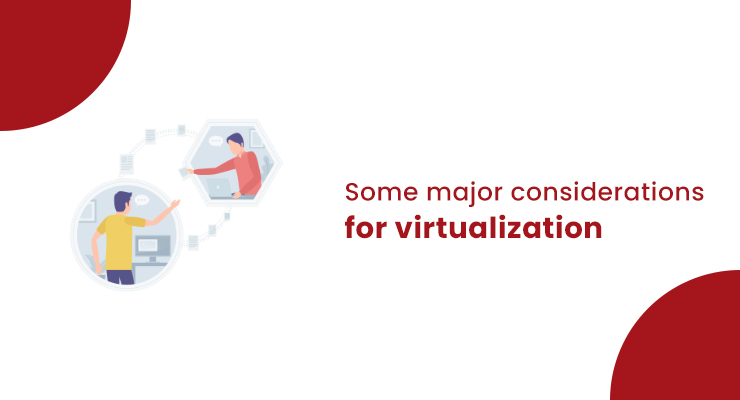As you prepare your server workloads for the virtual world, you need to make a range of considerations to ensure performance, efficiencies, cost-effectiveness, security, and availability of the virtualized resources. The following considerations will be key in achieving those goals:
- Security and Compliance Of Virtualization: Virtualization may affect the way IT workloads access and switch between different networking, computing, and storage layers. Tightly regulated industries may require sensitive user data to reside on separate physical storage.
- Software Performance Loss: Workloads with high I/O requirements or simultaneous processing of a high number of workloads with low I/O requirements may deteriorate software performance in virtual environments. The performance loss is also seen during data transfers, backup, and restoration processes. High network latency may also impact the user experience of running the software in the cloud.
- Higher Cost: Apps tend to perform slower in virtual environments as compared to native physical infrastructure installation. This can be compensated by deploying better hardware for the servers hosting the software applications in VMs. As a result, the total overhead for maintaining optimum software performance increases.
- Managing Complexity: Users can customize and fine-tune VMs to address the unique requirements of every IT workload and app, which may increase management efforts and complexity to operate the virtual infrastructure. For VM admins, this may add a layer of management responsibilities through multiple management consoles taking care of a distributed infrastructure environment comprising of network, software, administrative, OS, and hardware virtualization. The virtualization platforms must be tightly integrated with the underlying systems to maximize the performance potential of the overall system. Intelligent infrastructure monitoring and management capabilities may be required to maintain optimal operations within virtualized infrastructure environments.
- Future Proofing your Infrastructure: Fast and agile business organizations need to dynamically scale infrastructure resources based on unpredictable and evolving usage demands. Appropriate capacity planning strategies and tooling should be in place to maintain the agility that business organizations need to survive their competition as they leverage virtualization infrastructure resources.
Server Virtualization


